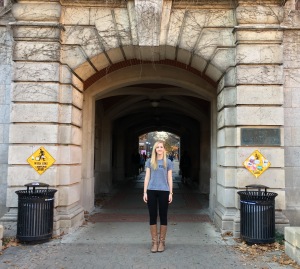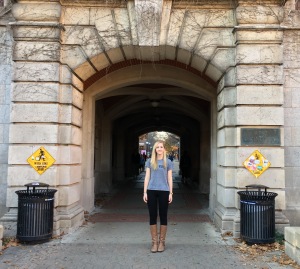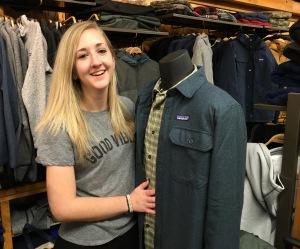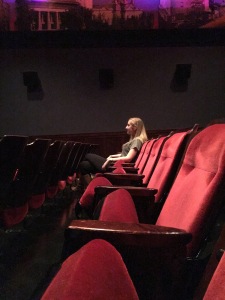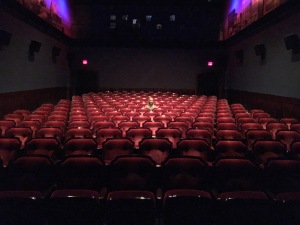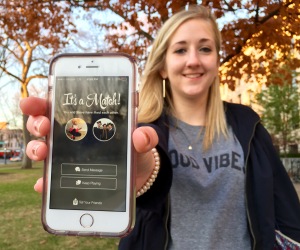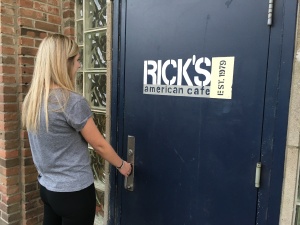“Hi! Do any of you happen to know which hall has the Gender Inclusive Living Experience?” I blurt out, unsure of how to approach the situation.
A cluster of on-duty Resident Advisors is sitting at a desk in the East Quad Community Center. When I approach they stop shuffling their papers and silence their conversation.
One of the girls at the desk raises her head at me. Her eyebrows squiggle upward, and her mouth tightens as if she has to conceal her “yes” before knowing my motive for the question.
“Maybe this wasn’t the right approach,” I think to myself.
Until one of the other RAs responds enthusiastically, “That’s my hall!”
“He’s my in.” I think, more confidently now.
As I explain my project, in hopes of him agreeing to do an interview with me, I try to maintain my composure.
“I researched this. I know what gender inclusive housing is. Avoid any speculative language. Stay objective. Smile.” As I inwardly recite these things to myself, I feel pressure to explain to him what is really darting through my mind.
The truth is, I feel vastly undereducated about gender and sexuality. I have never had to consciously think about my own expression of gender or sexual identity. I’m straight, I have female biological sex, I present myself femininely, and I identify as a woman. These are factors in my life that I never have had to confront or explain to anyone else. Sure, I know what LGBTQ stands for, and I have seen Orange is the New Black, but to claim that gives me a proper understanding of gender or sexuality feels unjust. Now I’m about to interview you about a topic where I can easily come across as insensitive, even though that is definitely not my intention. If I ask anything offensive, I’m sorry, I’m literally just ignorant on this topic.
“Please don’t answer anything you don’t feel comfortable with,” I decide to tell him instead.
Brian Garcia is the RA for the Gender Inclusive Living Experience (GILE) living community within East Quad. He begins talking with me about gender inclusive living and states, “It doesn’t look any different [from other halls] other than the fact that resources are offered.”
I begin to learn that some of the resources that students have access to in gender inclusive housing across campus include gender-neutral bathrooms, the option to have a single dorm room, or the ability pick roommates who also want to live in a gender inclusive environment. Specifically for the GILE community in East Quad students go through an orientation, and are given the option to have peer discussions, but nothing is mandated.
I also spoke with Will Sherry, the Director of the Spectrum Center, and one of the individuals who helps students who are seeking gender inclusive housing. He noted that, “We really don’t formally program a lot, and that is intentional.” Rather, Sherry attributes “informal relationship building” as an important practice for allowing for students who have similar identities to exchange information.
I start to understand that gender inclusive housing helps to give students an outlet to feel comfortable expressing themselves in their campus living situation. However, it does not assume all students who elect this option are the same in how they engage with their identity.
In reference to this, Sherry noted, “Just because people identify in similar ways, doesn’t mean they talk about their identities in similar ways, and it doesn’t mean that they have an understanding of the many other identities that each of them hold.”
I had to process this for a moment. I know that everyone has their own personal struggles, but I assumed that these were part of what drew this community together. That it was because of shared and relatable experiences.
To this note, Garcia shared a comment with me. “What is found with students with marginalized identities is that you’re often doing a lot of education in other spaces… It doesn’t mean that it doesn’t happen [in GILE] unfortunately, because we don’t live in a vacuum, but there are efforts.”
Throughout my discussions I learned that the real power of gender inclusive housing is driven by the idea that everyone deserves to be safe and comfortable in their own home. Whether that is through engaging with peers, or just by being able to use a restroom without fear, gender inclusive housing is one way to provide students with that security.
I went into this project thinking that I was going to interview someone who chose to live in gender inclusive housing based on specific experiences, or necessity. I was compartmentalizing this community with the idea that it was something different from other living spaces on campus. Though gender inclusive housing options do have certain features, it isn’t built out of an idea that it needs to be anything other than a safe space for students to live.
As I walked out of East Quad I thought back to my own experience of living in a dorm room. I hated my lofted bed, and constantly complained that I didn’t have enough room for my clothes. I know that my concerns were trivial, especially in comparison to other students’ worries. However I am also glad that those are the problems that more students are becoming able to focus on because of gender inclusive housing.
